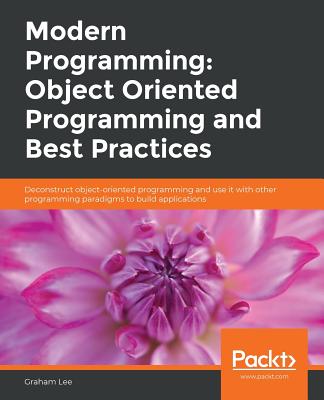商品描述
The role of maths and statistics in the world of web analytics is not clear to many marketers. Not many talk or write about the usage of statistics and data science in conversion optimization. This book has been written to fill this knowledge gap.
Often big heavy books on Maths and Statistics teach you more than you need to know, things that you may never use in your working life. Not only such books waste your time and money but they also constantly push you to give up on learning key maths and stats skills.
This expert guide will teach you exactly what you need to know. It will teach you how to leverage the knowledge of maths and statistics in order to accurately interpret data and take actions which can quickly improve the bottom-line of your online business. Every topic covered in this book has something to do directly with your day to day job.
This is not a book to become a full-fledged statistician/data scientist or a book to be used to pass your maths/stats college exam. You don't need a math or stats background in order to understand this book. Every topic has been explained in plain english.
This book explains some of the most useful statistics terms/concepts one by one and will also show you their practical use in web analytics and conversion optimization, so that you can take advantage of them straightaway.
Why do you need to know the maths and stats behind web analytics and conversion optimization?
It is not just about what you should know but is more about what you are expected to know esp. if you deal with businesses day in, day out. Here are few questions for your consideration:
Q1. When your website conversion rate jumps from 10% to 12% then is it 2% rise in conversion rate or 20% rise in conversion rate?
Q2. Can you double your sales by simply doubling your marketing budget?
Q3. Should you focus on large number of low value customers instead of few high value customers to maximize profit?
Q4. If campaign 'A' conversion rate is 10% and campaign 'B' conversion rate is 20%, does that mean campaign 'B' is performing better than campaign 'A'?
Q5. Average time on your website is 5 minutes. Does that mean website visitors actually spend 5 minutes on an average?
Often big heavy books on Maths and Statistics teach you more than you need to know, things that you may never use in your working life. Not only such books waste your time and money but they also constantly push you to give up on learning key maths and stats skills.
This expert guide will teach you exactly what you need to know. It will teach you how to leverage the knowledge of maths and statistics in order to accurately interpret data and take actions which can quickly improve the bottom-line of your online business. Every topic covered in this book has something to do directly with your day to day job.
This is not a book to become a full-fledged statistician/data scientist or a book to be used to pass your maths/stats college exam. You don't need a math or stats background in order to understand this book. Every topic has been explained in plain english.
This book explains some of the most useful statistics terms/concepts one by one and will also show you their practical use in web analytics and conversion optimization, so that you can take advantage of them straightaway.
Why do you need to know the maths and stats behind web analytics and conversion optimization?
It is not just about what you should know but is more about what you are expected to know esp. if you deal with businesses day in, day out. Here are few questions for your consideration:
Q1. When your website conversion rate jumps from 10% to 12% then is it 2% rise in conversion rate or 20% rise in conversion rate?
Q2. Can you double your sales by simply doubling your marketing budget?
Q3. Should you focus on large number of low value customers instead of few high value customers to maximize profit?
Q4. If campaign 'A' conversion rate is 10% and campaign 'B' conversion rate is 20%, does that mean campaign 'B' is performing better than campaign 'A'?
Q5. Average time on your website is 5 minutes. Does that mean website visitors actually spend 5 minutes on an average?
商品描述(中文翻譯)
數學和統計在網路分析世界中的角色對許多行銷人員來說並不明確。很少有人談論或撰寫有關統計和數據科學在轉換優化中的使用。本書旨在填補這一知識空白。
通常,厚重的數學和統計書籍教給你的知識超過你所需的,裡面有些內容你在工作中可能永遠不會用到。這類書籍不僅浪費你的時間和金錢,還不斷讓你放棄學習關鍵的數學和統計技能。
這本專家指南將教你所需的知識。它將教你如何利用數學和統計的知識來準確解釋數據並採取行動,這些行動可以迅速改善你在線業務的底線。本書涵蓋的每個主題都與你的日常工作直接相關。
這不是一本讓你成為全職統計學家或數據科學家的書,也不是一本用來通過數學或統計大學考試的書。你不需要數學或統計背景就能理解這本書。每個主題都用簡單的英語解釋。
本書逐一解釋一些最有用的統計術語和概念,並將展示它們在網路分析和轉換優化中的實際應用,讓你能立即利用這些知識。
為什麼你需要了解網路分析和轉換優化背後的數學和統計?
這不僅僅是你應該知道什麼,而是你被期望知道什麼,尤其是如果你每天都在處理業務。以下是幾個問題供你考慮:
Q1. 當你的網站轉換率從10%跳升到12%時,這是轉換率上升了2%還是20%?
Q2. 你能否僅通過將行銷預算加倍來使銷售額翻倍?
Q3. 你應該專注於大量低價值客戶,而不是少數高價值客戶,以最大化利潤嗎?
Q4. 如果活動'A'的轉換率為10%,而活動'B'的轉換率為20%,這是否意味著活動'B'的表現優於活動'A'?
Q5. 你網站的平均停留時間為5分鐘。這是否意味著網站訪客實際上平均花費5分鐘?






























